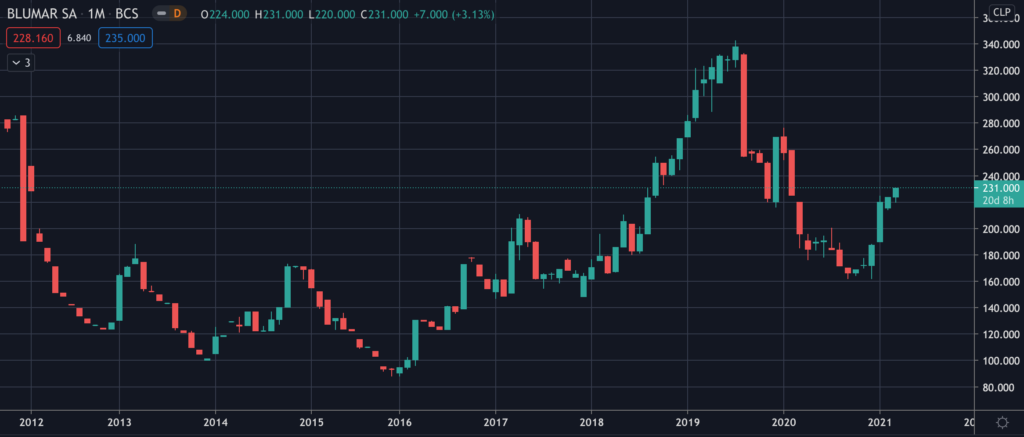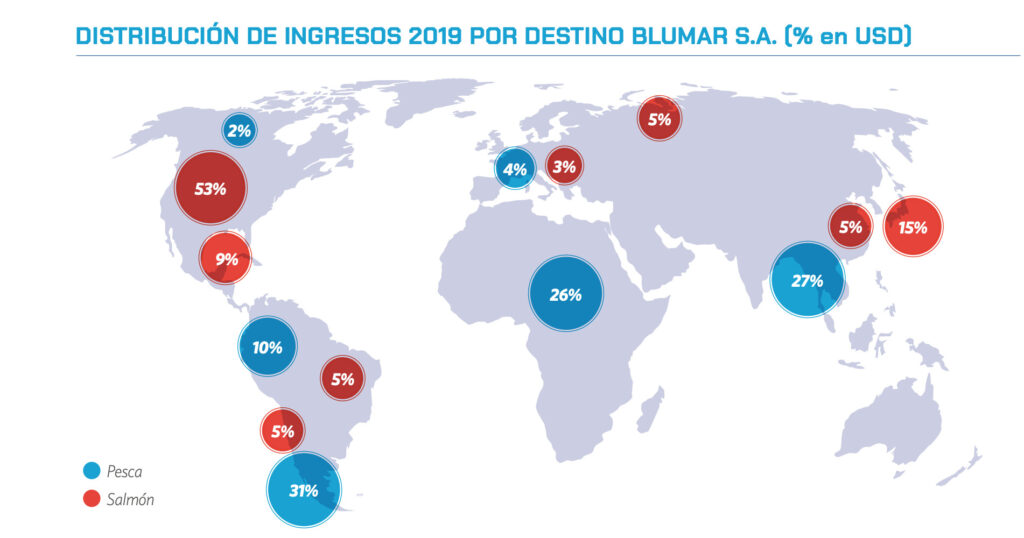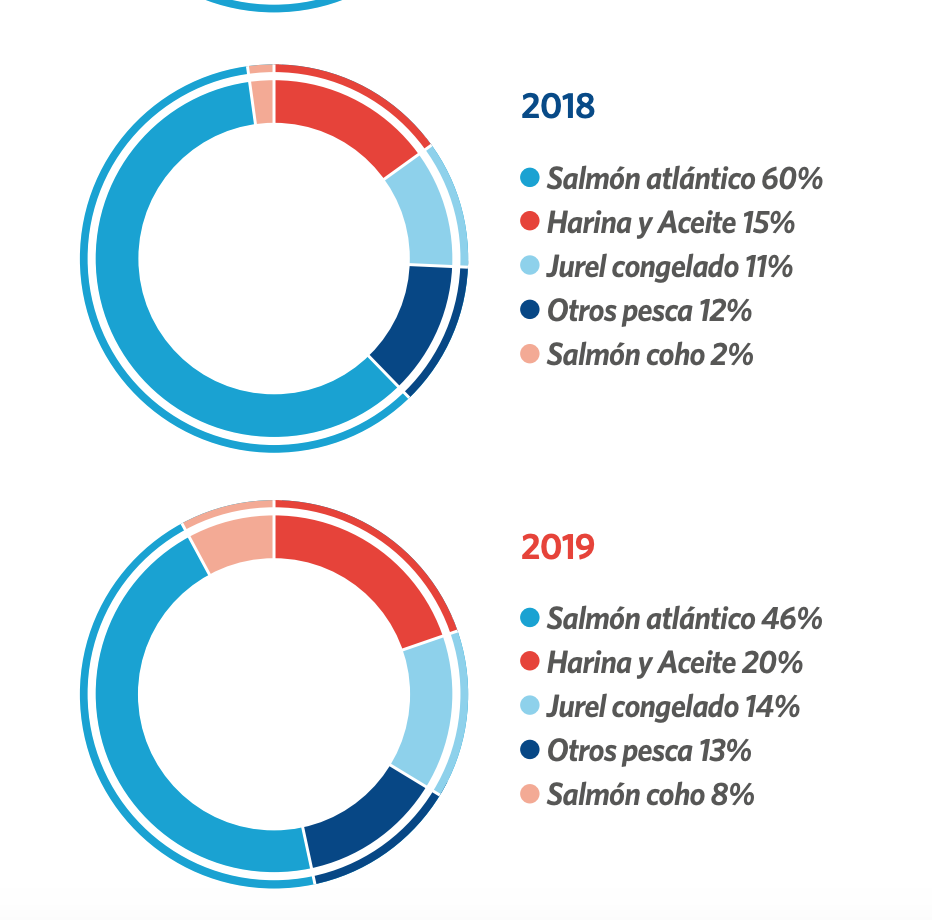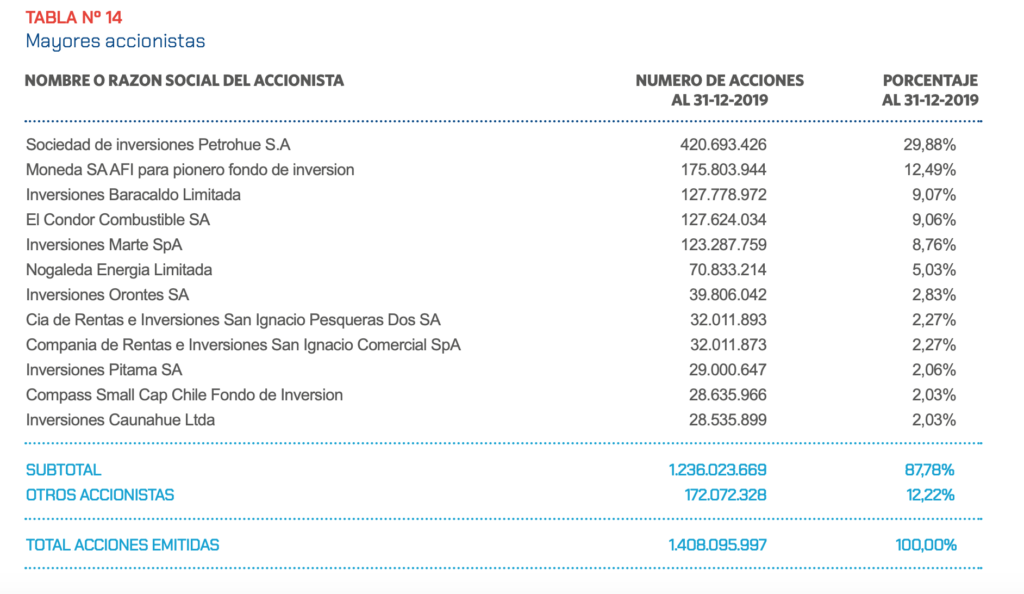Common Stock: Blumar Seafood
Current Market Price: $231 (CLP); $0.31 (USD)
Market Capitalization: $325 Billion (CLP); $430 Million (USD)
*All values in this article are expressed United States Dollars (USD) unless otherwise noted.
**The bulk of this analysis is based on the company’s most recent audited financial report, which can be found by following this link.

Blumar Seafood Stock – Summary of the Company
Blumar is a Chilean fishing and aquaculture company. They produce frozen mackerel for human consumption as well as for fish meal and fish oil. In addition the produce and sell mussels as well as whitefish derivative products. The company’s main product is fresh and frozen salmon, which they export throughout Latin America, Europe, Asia, and The United States.
The company has a total of 18 salmon farms, 4 fishmeal plants, and 5 human consumption plants. Blumar was founded in 1961 and is headquartered in Santiago, Chile. The company employs around 1,700 people.

Revenue and Cost Analysis
Blumar had revenue of $390.7 million in 2019, a significant decrease from $503.3 million in 2018. Their COGS in 2019 was $316.2 million, representing a gross margin of 19%, a significant deterioration compared to 30% in 2018.
Despite declining top line sales and gross margins, Blumar was profitable in both 2019 and 2018. In 2019 the company had net income of $12.1 million, representing a profit margin of 3.1%, a significant decrease compared to 13.3% the previous year.

Balance Sheet Analysis
Blumar has a decent, but leveraged balance sheet. They have a good base of long term assets and sufficient near term liquidity. However they are leveraged, with significant liabilities, including debt.
Blumar Seafood – Debt Analysis
As of year-end 2019 Blumar has $252.7 million in total debt outstanding, $55.6 million of which is classified as current.
Blumar Seafood Stock – Share Dynamics and Capital Structure
As of year-end 2019 the company has 1.4 billion common shares outstanding. The company’s top 12 largest shareholders own a combined 87.8 % of the company.

Blumar Seafood Stock – Dividends
The company paid total dividends per share of $0.0048 cents in 2019. At the current market price this implies a dividend yield of 1.5%.
Blumar Seafood Stock – 3 Metrics to Consider
Debt to Equity Ratio
Total Liabilities/Total Share Holder Equity
$435 million / $399 million = 1.1
A debt to equity ratio of 1.1 indicates that Blumar uses a mix of debt and equity in its capital structure, but is slightly leveraged, relying more heavily on debt financing for funding.
Working Capital Ratio
Current Assets/Current Liabilities
$334 million / $167.8 million = 2
A working capital ratio of 2 indicates a sound liquidity position. Blumar should not have problems meeting its near term obligations.
Price to Book Ratio
Current Share Price/Book Value per Share.
$0.31 / $0.28 = 1.1
Blumar has a book value per share of $0.28 cents. At the current market price this implies a price to book ratio of 1.1, meaning Blumar stock currently trades at a slight premium to the book value of the company.
Blumar Seafood Stock – Summary and Conclusions
Blumar is a solid company. They are a top 10 fish exporter in Chile with a global client base. Their product portfolio if fairly diversified. The company is in decent financial health, with sufficient near term liquidity and a profit. However top line revenue declined significantly year over year, resulting in deteriorating gross and profit margins in 2019. Despite declining revenue, the company was still able to maintain a small dividend.
2019 was clearly a difficult year for Chilean fish companies. While the industry may be attractive long term, I am not sure now is the right time to invest in any Chilean fishing company. I will revisit Blumar stock when their full 2020 financials are made available.
Investors can compare Blumar stock to the largest Chilean fish exporter, AquaChile.
Disclaimer
This is not investment advice. Nothing in this analysis should be construed as a recommendation to buy, sell, or otherwise take action related to the security discussed. If I own a position in the security discussed, I will clearly state it.
This is not intended to be a comprehensive analysis and you should not make an investment decision based solely on the information in this analysis. I hope this serves as a useful starting point for a more comprehensive analysis, and hopefully draws attention to aspects of the company that were overlooked or merit further investigation. This is by no means intended to be a complete analysis. Again, this is not investment advice, do your own research.